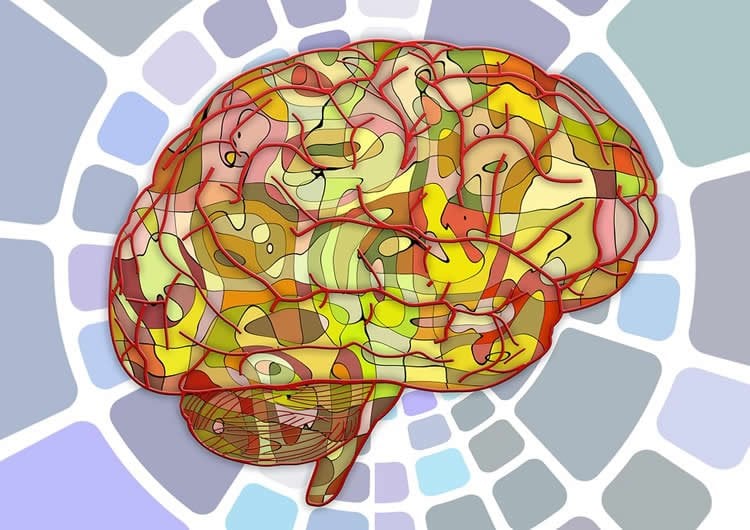Cognitive impairment following a traumatic brain injury (TBI) is common, often adversely affecting quality of life for those 1.7 million Americans who experience a TBI each year. Researchers at the Center for BrainHealth at The University of Texas at Dallas have identified complex brain connectivity patterns in individuals with chronic phases of traumatic brain injury which may explain long term higher order cognitive function deficits.
A study recently published in the Journal of International Neuropsychological Society found that individuals who are at least six months post-injury exhibit between-network, long-range and inter-hemispheric connectivity disruptions. Specifically, scientists observed TBI-related connectivity disruptions in the default mode and dorsal attention networks and the default mode and frontoparietal control networks; interactions among the networks are key to achieving daily life goals.
“Cooperation between the default mode network, dorsal attention and the frontoparietal control networks is key to controlling internal trains of thought and achieving tasks in changing environments,” said Kihwan Han, Ph.D., study lead author and post doctoral research associate at the Center for BrainHealth. “Interactions among these networks are intricately intertwined and critical to daily life tasks such as planning, learning and problem solving. This work suggests that cognitive deficits may be a result of reduced efficiency in brain-network communications.”
For the study, researchers analyzed MRI scans of 40 TBI individuals with those of 17 healthy individuals matched for gender, age and years of education. Participants were ages 19 to 45. While all individuals in the TBI group were at least six months post-injury at the time of the study, the average length of time since injury was eight years with no history of any significant, clinically-diagnosed neurological or psychiatric disorders prior to their TBI.

“Much research has focused on separating out individual brain networks,” said Daniel Krawczyk, Ph.D., principal investigator, associate professor of cognitive neuroscience and cognitive psychology at the Center for BrainHealth and Debbie and Jim Francis Chair at The University of Texas at Dallas. “This is the first study of its kind to show the intercorrelations among different networks and disruptions among them in individuals with TBI.”
“If key brain networks cannot interact in a normal way, the brain becomes inefficient,” Krawczyk explained. “Our future research will examine how networks can be improved or enhanced, even after a traumatic brain injury, with cognitive intervention.”
Funding: Funding was provided by US Department of Defense, The Meadows Foundation.
Source: Shelly Kirkland – UT Center For BrainHealth
Image Source: Image is in the public domain.
Original Research: Abstract for “Disrupted Intrinsic Connectivity among Default, Dorsal Attention, and Frontoparietal Control Networks in Individuals with Chronic Traumatic Brain Injury” by Kihwan Han, Sandra B. Chapman and Daniel C. Krawczyk in Journal of International Neuropsychological Society. Published online February 2016 doi:10.1017/S1355617715001393
Abstract
Disrupted Intrinsic Connectivity among Default, Dorsal Attention, and Frontoparietal Control Networks in Individuals with Chronic Traumatic Brain Injury
Objectives: Individuals with chronic traumatic brain injury (TBI) often show detrimental deficits in higher order cognitive functions requiring coordination of multiple brain networks. Although assessing TBI-related deficits in higher order cognition in the context of network dysfunction is promising, few studies have systematically investigated altered interactions among multiple networks in chronic TBI.
Method: We characterized disrupted resting-state functional connectivity of the default mode network (DMN), dorsal attention network (DAN), and frontoparietal control network (FPCN) whose interactions are required for internally and externally focused goal-directed cognition in chronic TBI. Specifically, we compared the network interactions of 40 chronic TBI individuals (8 years post-injury on average) with those of 17 healthy individuals matched for gender, age, and years of education.
Results: The network-based statistic (NBS) on DMN-DAN-FPCN connectivity of these groups revealed statistically significant (pNBS<.05; |Z|>2.58) reductions in within-DMN, within-FPCN, DMN-DAN, and DMN-FPCN connectivity of the TBI group over healthy controls. Importantly, such disruptions occurred prominently in between-network connectivity. Subsequent analyses further exhibited the disrupted connectivity patterns of the chronic TBI group occurring preferentially in long-range and inter-hemispheric connectivity of DMN-DAN-FPCN. Most importantly, graph-theoretic analysis demonstrated relative reductions in global, local and cost efficiency (p<.05) as a consequence of the network disruption patterns in the TBI group.
Conclusion: Our findings suggest that assessing multiple networks-of-interest simultaneously will allow us to better understand deficits in goal-directed cognition and other higher order cognitive phenomena in chronic TBI. Future research will be needed to better understand the behavioral consequences related to these network disruptions.
“Disrupted Intrinsic Connectivity among Default, Dorsal Attention, and Frontoparietal Control Networks in Individuals with Chronic Traumatic Brain Injury” by Kihwan Han, Sandra B. Chapman and Daniel C. Krawczyk in Journal of International Neuropsychological Society. Published online February 2016 doi:10.1017/S1355617715001393






